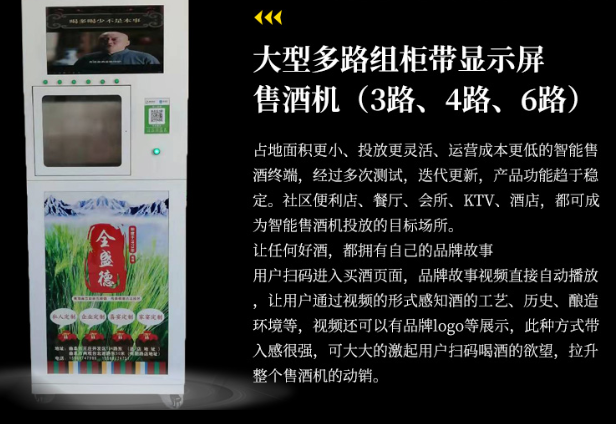发布于:2024-01-29 20:45:18 来源:http://www.qfrtrq.com
1、加入酒曲时温度要求:①夏天缸内水温25-30℃,冬天30-36℃。用温度计测量缸内水温,不能凭手感估测,以防温度过高,将酒曲烫死,引起酸酒或减少出酒量。②发酵温度:发酵温度25-35℃,低于20℃发酵不良,需加温。可用蜂窝煤炉(用管道将煤气接出室外)或电炉等加温设备加温。
1. Temperature requirements for adding yeast: ① The water temperature in the tank is 25-30 ℃ in summer and 30-36 ℃ in winter. Measure the water temperature inside the cylinder with a thermometer, and do not estimate it based on hand feeling, in order to prevent the temperature from being too high and causing the yeast to burn to death, causing sour wine or reducing the alcohol output Fermentation temperature: The fermentation temperature is 25-35 ℃. If it is below 20 ℃, the fermentation is not good and needs to be heated. Heating equipment such as a honeycomb coal furnace (using pipes to connect gas outdoors) or an electric furnace can be used for heating.
2、用水要求:用不带碱性的泉水或自来水。水质无色、透明、极少悬浮物或沉淀,清爽适口,略有回甜。
2. Water requirements: Use non alkaline spring water or tap water. The water quality is colorless, transparent, with very little suspended solids or sediment, refreshing and palatable, and slightly sweet.

3、为提高酒质,将酒头(100公斤粮食接酒头1公斤)和酒尾留下,等下次蒸酒时混合蒸馏。
3. To improve the quality of the wine, leave the wine head (1 kilogram of grain mixed with the wine head) and the wine tail, and mix and distill the next time the wine is steamed.
4、厌氧发酵:特别是中期和后期,要严格封缸,厌氧发酵,否则漏气后引起酒产酸而降低出酒率。
4. Anaerobic fermentation: Especially in the middle and late stages, strict sealing of the tank and anaerobic fermentation should be carried out, otherwise gas leakage can cause acid production in the wine and reduce the yield.
5、粮食混合发酵:①玉米40%,高粱25%,小麦35%;②大米60%,高粱15%,玉米25%,酒质会更好。
5. Grain mixed fermentation: ① 40% corn, 25% sorghum, 35% wheat; ② 60% rice, 15% sorghum, and 25% corn will improve the quality of the wine.
6、发酵过程。发酵初期:液面布满气泡,以后小气泡大似肥皂泡、原料上下窜动,翻腾酒液变混浊。发酵衰退期:原料漂浮液面气泡减少,少数原料仍在窜动。发酵完毕:液面原料沉入缸底,料液处于静止状态,并由浑浊变清。进入发酵完毕期即可蒸馏。
6. Fermentation process. In the early stage of fermentation: the liquid surface is filled with bubbles, and later small bubbles are as big as soap bubbles. The raw materials move up and down, causing the wine to become turbid when stirred. Fermentation decline period: The bubbles on the floating surface of the raw materials decrease, and a few raw materials are still moving. Fermentation completed: The liquid surface of the raw material sinks into the bottom of the tank, and the material liquid is in a static state, changing from turbid to clear. Distillation can be carried out once the fermentation is completed.
 自动售酒机 2024-07-25
自动售酒机 2024-07-25  不锈钢酒桶:关于酒桶你需要知道的一切 2024-07-19
不锈钢酒桶:关于酒桶你需要知道的一切 2024-07-19  不锈钢酿酒桶大解析! 2024-07-13
不锈钢酿酒桶大解析! 2024-07-13  不锈钢酒罐的产品概述及特点 2024-06-13
不锈钢酒罐的产品概述及特点 2024-06-13  大型酿酒设备有哪些组成? 2024-06-10
大型酿酒设备有哪些组成? 2024-06-10  自动售酒机的产品特点 2024-06-07
自动售酒机的产品特点 2024-06-07  白酒酿酒设备知识介绍 2024-06-04
白酒酿酒设备知识介绍 2024-06-04  全自动凉茬机的使用故障有哪些? 2024-05-24
全自动凉茬机的使用故障有哪些? 2024-05-24  不锈钢内胆实木酒桶:木酒桶如何储存葡萄酒? 2024-05-23
不锈钢内胆实木酒桶:木酒桶如何储存葡萄酒? 2024-05-23  自动售酒机有哪些功能 2024-05-22
自动售酒机有哪些功能 2024-05-22  全自动凉茬机的工艺流程以及组成 2024-05-21
全自动凉茬机的工艺流程以及组成 2024-05-21  不锈钢内胆实木酒桶:不锈钢材质的优势 2024-05-20
不锈钢内胆实木酒桶:不锈钢材质的优势 2024-05-20